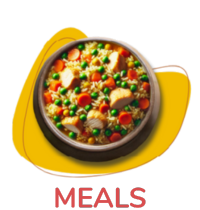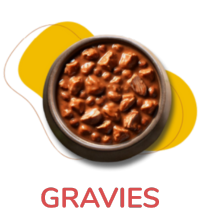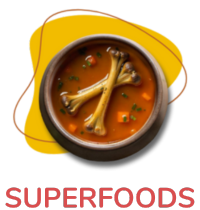Weight management in a pet is important for its overall health and longevity. With increasing awareness about pet obesity, more pet owners are opting for fresh, whole foods as the answer. Fresh nutrition has many advantages when it comes to weight management, ranging from better portion control to a balanced nutrient intake. This blog will discuss how fresh foods can be incorporated effectively into a pet's diet to manage their weight.
Portion Control with Fresh Food
1. Measuring Meals:
Precision Feeding: Fresh-food diets make accurate portion measurement and measurement easier due to the presence of less water, making fresh foods more practical for weight regulation. Fresh food, such as lean meat, veggies, and grains, may be measured and proportioned according to your pet's specific needs, unlike processed food, whose calories are packed in and hence more difficult to measure.
Regular Monitoring: Adjust serving sizes according to your pet's age, activity level, and weight swings. A regular visit to a veterinarian will help decide whether portions should be altered.

2. Frequency of Feeding:
Smaller, More Frequent Meals: Feeding smaller portions more frequently throughout the day can help manage hunger and maintain a steady metabolic rate, which is beneficial for weight control.
Benefits of a Balanced Diet
1. Comprehensive Nutrition:
Macro and Micronutrients: Fresh foods have a well-balanced mix of nutrients that are necessary for overall health. The proteins in lean meats, fibers in vegetables, and carbohydrates in grains form a well-balanced diet.
Natural Vitamins and Minerals: Natural vitamins and minerals found in fresh fruits and vegetables ensure everything from bone strength to immune function.

2. Digestive Health:
Improved Digestion: Fresh foods tend to digest more easily for animals than highly processed foods containing fillers and additives that contribute to weight gain.
Combatting Pet Obesity with Fresh Meals
1. Customizable Diets:
Tailored Nutritional Plans: New diets are tailored to the specific needs of a pet as per their health status, weight requirements, and preference, offering an individualistic approach to managing excess weight.
Incorporation of Superfoods: Nutrient-rich but calorie-low foods like pumpkin, sweet potato, and green beans can be incorporated into meals to enhance fullness without adding a lot of calories.


2. Integration with Physical Activity:
Balancing Diet and Exercise: Fresh food diet must be accompanied by daily exercise. Calorie intake must be controlled based on the pet's activity, ensuring a healthy weight reduction program.

3. Behavioural Benefits:
Increased Energy and Vitality: Pets on a well-balanced, fresh diet are generally more energetic and vital, becoming more active and willing to exercise, which assists in weight regulation.

Conclusion
Fresh diets take a key position in keeping a pet weight-controlled. With the provision of exact portion control, a healthy mix of nutrients and the flexibility to make personalized meals, fresh foods can heavily tackle pet obesity. Pet owners must think of adding fresh food to their pet's diet but only after consultation with a veterinarian to make sure that the diet contains all the required nutrients. Accepting new nutrition not only aids in weight management but also promotes overall pet health and well-being.







